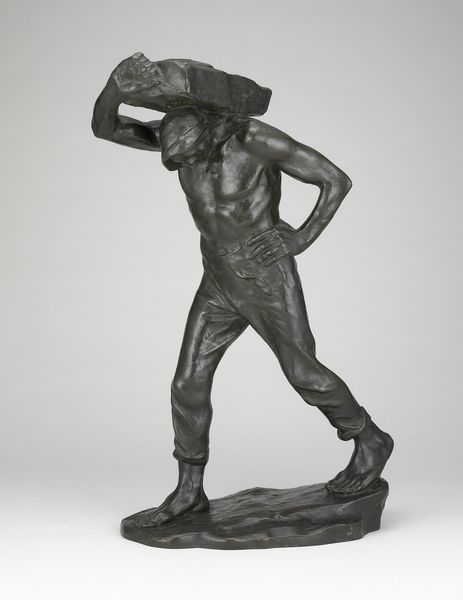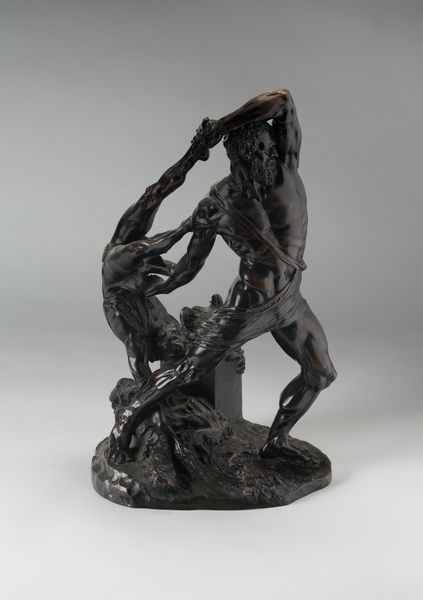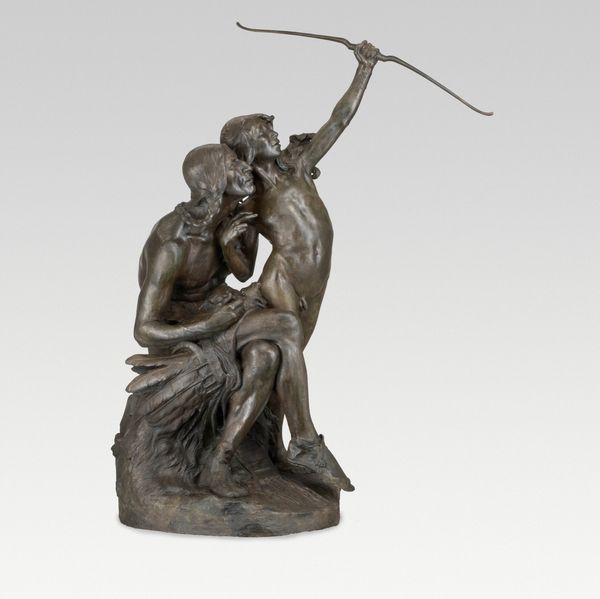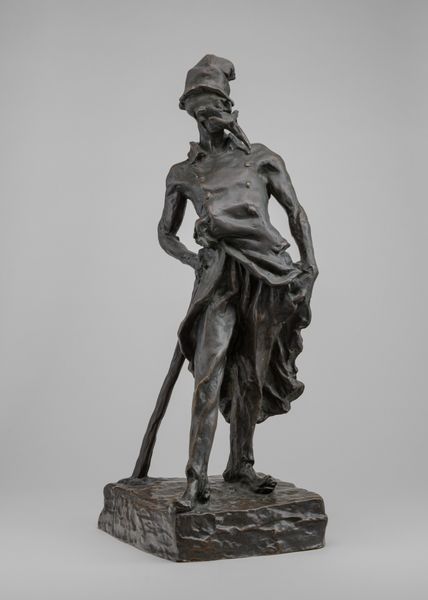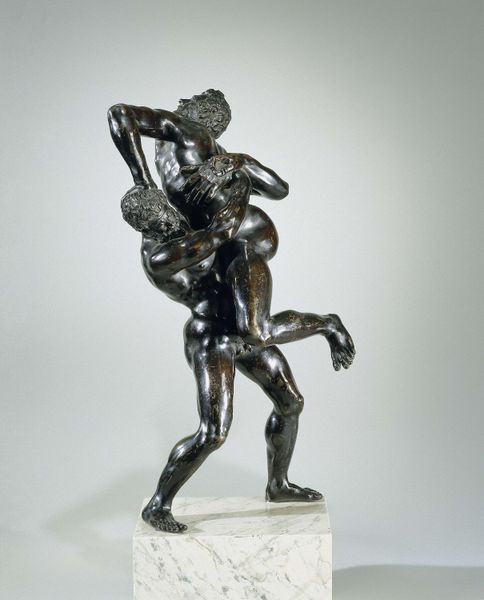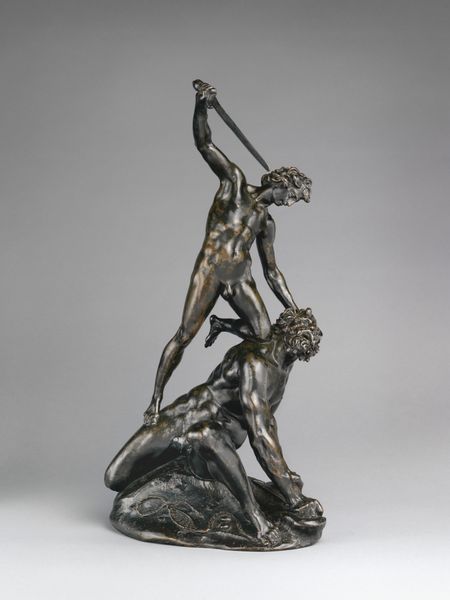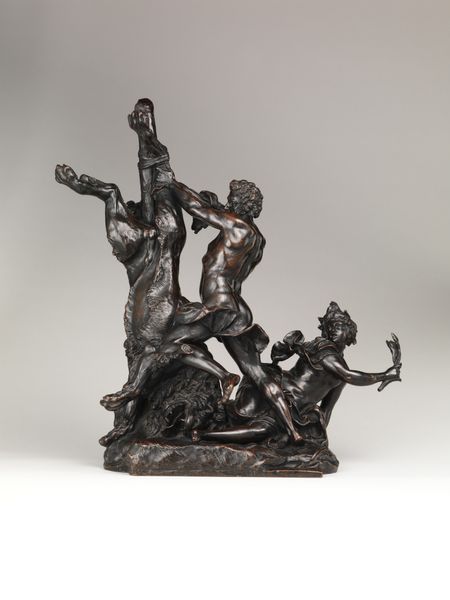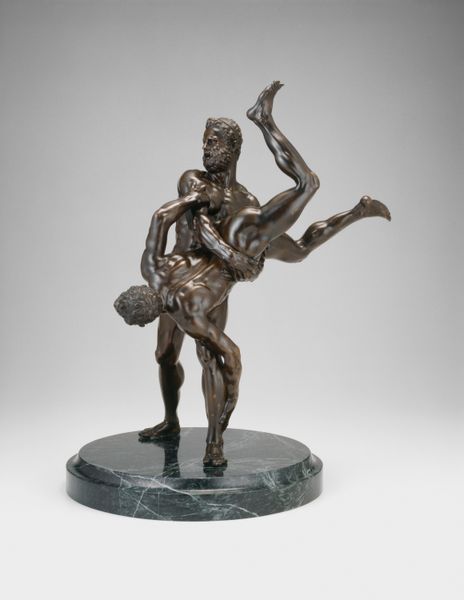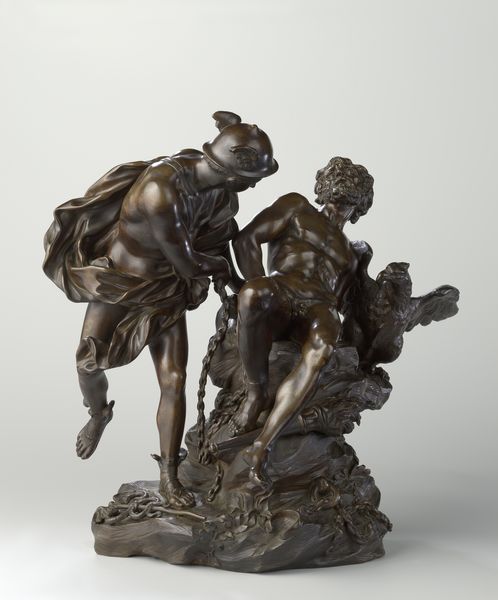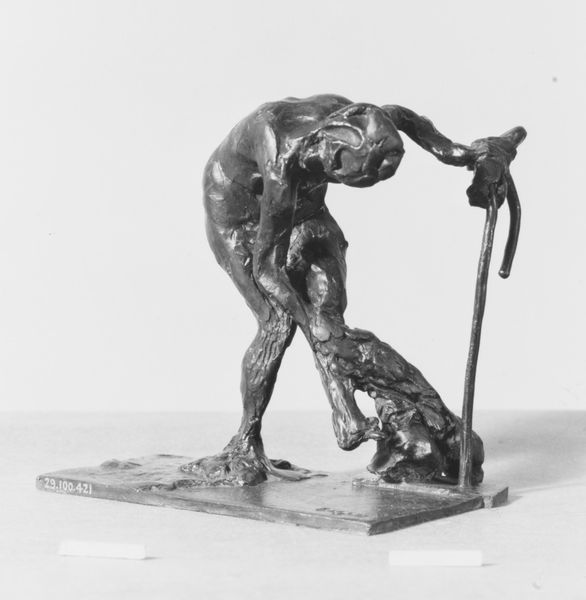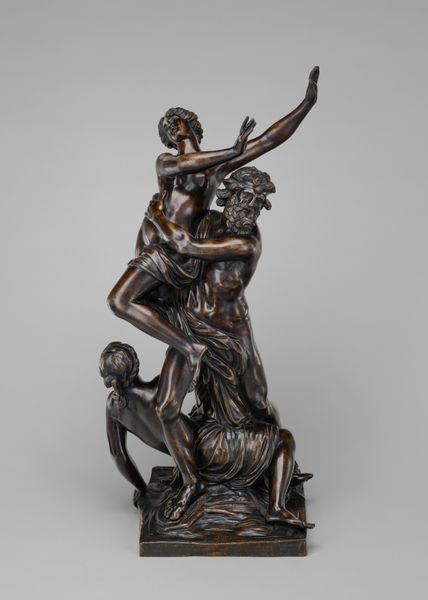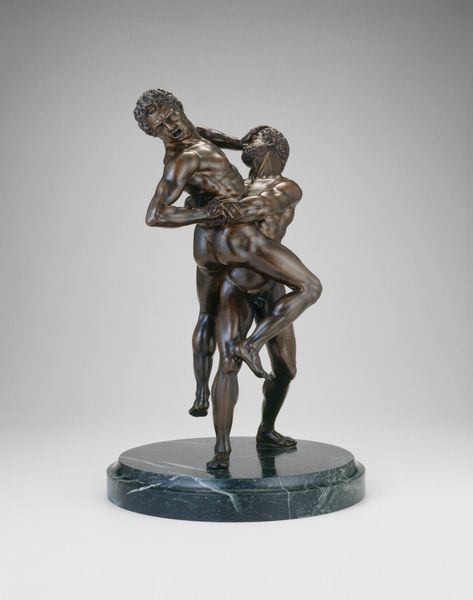
bronze, sculpture
#
portrait
#
statue
#
sculpture
#
bronze
#
figuration
#
sculpture
#
men
#
genre-painting
#
history-painting
#
realism
#
statue
Dimensions: 56.5 × 43.2 × 23.5 cm (22 1/4 × 17 × 9 1/4 in.)
Copyright: Public Domain
Curator: Let's turn our attention to Constantin Meunier's "The Reaper," created around 1895. It's a bronze sculpture residing here at The Art Institute of Chicago. What strikes you initially? Editor: The sheer weight of him. You feel the strain in every line, the downturn of his head, the tautness in his limbs. The monochromatic bronze seems to emphasize the gravity of his labor. Curator: Meunier was deeply interested in representing the working class with dignity. He aimed to elevate the industrial worker, making him a subject worthy of artistic representation at a time when academic art still favored historical or mythological subjects. Editor: Absolutely, you can see echoes of classical statuary, but it's grounded, literally, in this rough, unidealized form. The figure isn't standing heroically upright; he’s bent, engaged in the act of reaping. His form almost merges with the earth at his feet. Curator: Indeed. This sculpture, along with others by Meunier, became symbols of the socialist movements of the late 19th century, embodying the nobility of labor and calling attention to the plight of the working class. The placement in public squares and museums also shaped his impact. Editor: Consider how the rough texture of the bronze contrasts with the smoother finish on his skin. The folds of his clothes create almost baroque lines which creates depth. I love how he emphasizes the textures in ways that underscore physical labor. Curator: He definitely wanted to highlight both the beauty and the burden of that work. And how these figures represented something that resonated deeply with the people living through this industrial revolution and witnessing massive social change. Editor: I think Meunier's work, beyond its sociopolitical context, remains powerful because it speaks to the timeless experience of human toil, the way we're marked by what we do. Curator: It invites reflection on the conditions of work and the place of the individual in a changing society and allows the worker to assume a kind of monumental dignity, historically absent. Editor: Precisely, it’s about taking notice of the beauty and strain in what might otherwise go unnoticed.
Comments
No comments
Be the first to comment and join the conversation on the ultimate creative platform.
